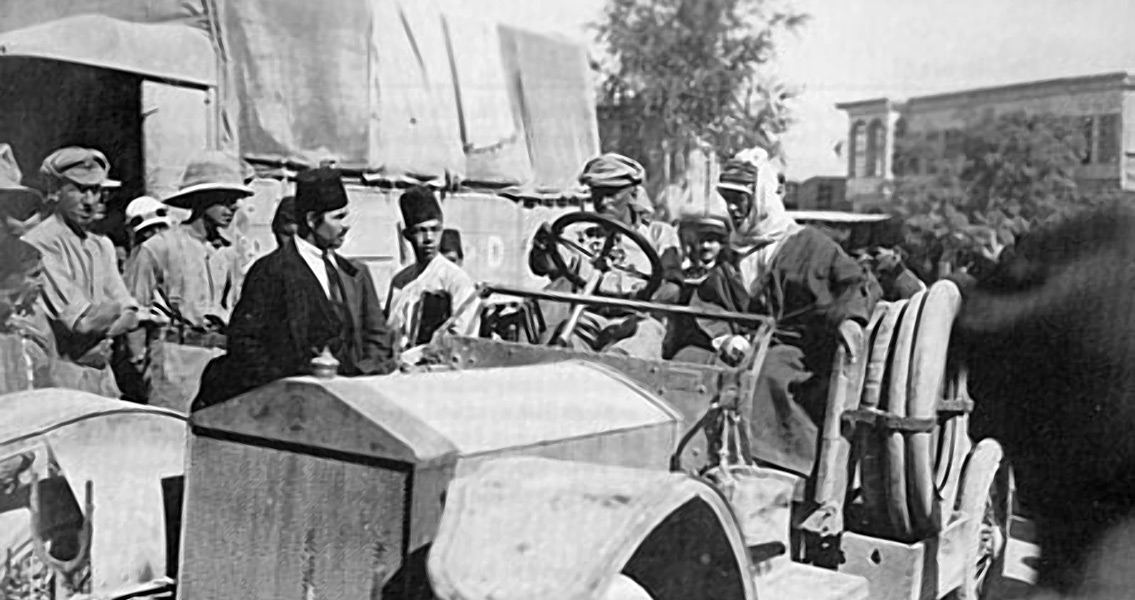<![CDATA[On 1st October, 1918, a combined force of Arab, Australian and British soldiers triumphantly entered the city of Damascus. The event marked the culmination of the Arab Revolt of 1916 - 1918, ending centuries of Ottoman Rule over the Arab people of the Middle East. The attack and capture of Damascus is most often associated with T.E. Lawrence, a British intelligence officer whose exploits in the Middle East were romanticised in the hugely successful 1962 movie 'Lawrence of Arabia'. Although Lawrence's role undeniably makes a fascinating story, it was just one part in an elaborate mixture of regional and global events in the region. Since the sixteenth century the Ottoman Empire had ruled over the Arabian Peninsula and North Africa, an area which included modern day Syria, Iraq, Jordan, Israel and much more. For much of its history the empire had allowed its diverse inhabitants, including peoples such as Armenians, Kurds, and Arabs, to live relatively freely providing they remained loyal. By the late nineteenth century this situation began to change. As the Ottoman Empire entered its decline, outbursts of nationalism inspired by the example of Western Europe pushed the Ottoman regime to become harsher, attempting to unite its diverse peoples under the banner of shared religious values. Nationalist ideas continued to form in the region, while other European powers such as Britain, France and Russia began to have designs on the territory of the increasingly fragile Ottoman empire. When the First World War broke out in 1914, and the Axis powers won a significant series of early victories, British intelligence developed a plan to ferment instability in the Ottoman Empire as a means to unsettle the Axis' eastern ally. In 1916, the British High Commissioner in Cairo Sir Henry McMahon wrote to Sherif Hussein ibn Ali, the Arab Emir of Mecca, and asked him to start a rebellion. Initially hesitant, Hussein eventually agreed to the British plan following the execution of several Arab nationalists. A deal was agreed where Britain would supply resources to assist the revolt, and help found independent Arab nations in the Fertile Crescent. Lawrence, an Oxford University educated archaeologist who had traveled extensively around the Middle East and learnt to speak Arabic, joined British intelligence following the outbreak of the war. He was deployed to Egypt in 1914, before being dispatched with a British diplomat to Arabia in 1916. Hussein had amassed a force of some 30,000 soldiers to fight in the revolt, which had been divided up into the Arab Northern, Southern and Eastern armies. Each was controlled by one of Hussein's sons, and tasked with causing as much damage and disruption to the Ottoman war machine as possible. Lawrence was assigned to the Northern army, where he was to serve as a liason between its leader Feisal and the British forces in the region. Lawrence helped the Northern Arab army carry out a highly successful campaign of guerrilla warfare, attacking the 700 mile Hejaz Railway relentlessly. As the railway came close to being unusable, the connection between Median and Istanbul was cut, making it much harder for support to reach troops in the region. A key target of the campaign was to push north, allowing the various Arab armies to unite in the region and tactically out maneuver the Turkish forces. In 1917 a small Arab force, which included Lawrence, launched a daring attack on the port of Aqaba, approaching the city through the desert with a force of just 700 men. The tactic was a masterstroke, the city, completely surprised by the attack, surrendered with little resistance and the Arab Revolt had gained a vital foothold. The Arab forces were now able to join the British march on Jerusalem. The campaign of attacking railway and supply lines continued, providing a vital distraction which allowed the army of General Allenby to launch an attack on Gaza, capturing Jerusalem and what is now Israel and Palestine in December 1917. The Northern Army, aided by Australian forces as well as soldiers from Algeria and Egypt, took advantage of the chaos among the Ottoman ranks following the defeat of Jerusalem, and prepared for an attack on Damascus. Undoubtedly, the success of the Arab Revolt was down to a combination of factors, both the Arab drive towards nationalism and the British, Australian and French support given to it in terms of both resources and soldiers. It was a joint venture which proved key in shaping the outcome of the First World War, diverting Turkish support from the Axis cause. The Allies gained what they wanted, but the same could not be said for the Arabs. Hussein was not given control of the territory he desired, and Arab nationalism was then blocked when the League of Nations divided up the territory of the region into protectorates administered by Britain, and in the case of Syria, France. Lawrence himself is known to have been particularly disappointed at what he saw as a double cross by the British. For the Middle East as a whole, the liberation of Damascus can be seen as the starting point for many of the conflicts which continue to divide the region. ]]>
Arab Revolt Takes Damascus
